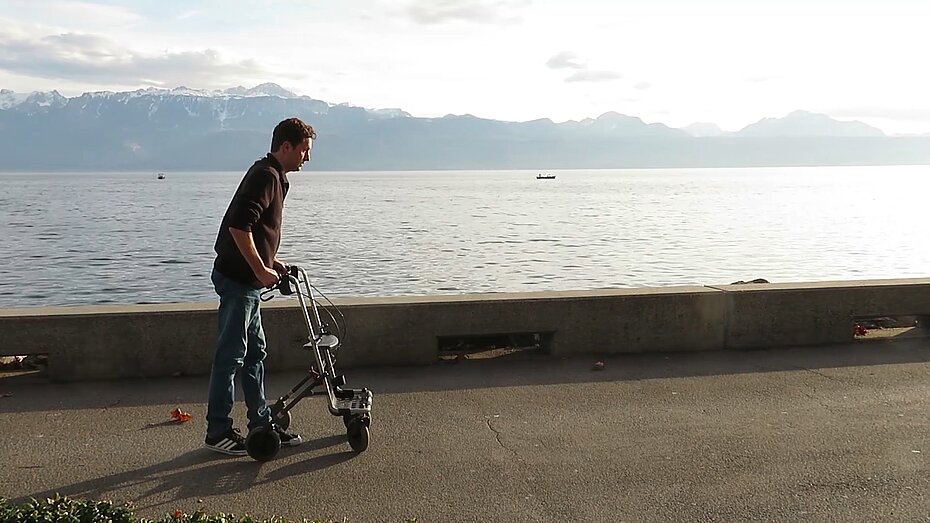Following a traffic accident, the Dutchman was told he’d never walk again. Then, incredibly, last year he took part in the Wings for Life World Run
Gert-Jan Oskam can barely recall the day of his traffic accident in 2011. All he has are flashes of memories: waking up in a moving ambulance in excruciating pain; being asked by a doctor if he had enough money to receive treatment; realising that he had no feeling in his lower body and was paralysed from the waist down.
On his flight back to the Netherlands – at the time of the accident, Oskam worked in China as a logistics coordinator – he was sure that back home they’d fix him. But, after the surgery, the doctor seemed pleased that his patient was even able to reach his nose with his arm. “He said, ‘You can scratch your nose – that’s good. You shouldn’t expect further improvement,’” Oskam remembers. Being asked to accept his condition felt like a smack in the face. “I’m pretty stubborn,” he says. “So, when he said that I wouldn’t be able to walk again, I decided to do anything to prove him wrong.”
The first few years were shaped by tough training. In addition to his physiotherapy sessions, Oskam would go to the gym, and play wheelchair rugby several times a week. “As a paraplegic, working out is essential to keep your energy level up,” he explains. “Even simple tasks like getting dressed require a lot of time and energy.” When a doctor told him about a new study in Switzerland, STIMO (Stimulation Movement Overground), Oskam was excited. “Taking part in a clinical trial is the only hope you have when you’re paralysed,” he says, “because normal training just won’t get you to the level of walking you dream of.”
Oskam joined STIMO at the Lausanne University Hospital in 2017 for a seven-month trial. First, he had electrodes surgically inserted in his lower back. Through these electrodes, electrical pulses are delivered to the spinal cord to stimulate the muscles, potentially helping the remaining nerves that weren’t severed in the accident to carry signals from the brain to the legs. Following the surgery, Oskam spent the remainder of his time in Lausanne stretching, standing up – and walking, first with a harness, then with crutches. Eventually he was able to take a few steps without the aid of any device.

Today, the 37-year-old walks six times faster than before entering the STIMO trial. Whereas at first walking meant forcing one foot in front of the other for a maximum of 20m before he had to stop, Oskam can now move for 100m without getting exhausted. “Make no mistake, though,” he says, “my condition has improved a lot, but the wheelchair is still part of my life. There is no cure yet.”
In order to raise awareness, Oskam took part in 2019’s Wings for Life World Run. Over the last 16 years, the foundation Wings for Life has supported and funded more than 200 research projects and clinical studies in 19 countries, the STIMO trial being one of them. Red Bull covers all of the foundation’s administrative costs, so 100 per cent of all donations and entry fees from the Wings for Life World Run go to spinal cord injury research.
“It’s different from other runs – people are enthusiastic and very relaxed,” says Oskam, describing the event’s atmosphere. “It’s not so much about competition as it is about charity and togetherness.” The Dutchman managed 100m with his walker, but, despite how impressive this seems, he wasn’t satisfied: “It took me 30 minutes, whereas at home I can walk the same distance easily in 15 minutes.” Last year, Oskam paused his plans due to further surgery, but in 2021 he aims to be back at the starting line. His new goal: 250m.
